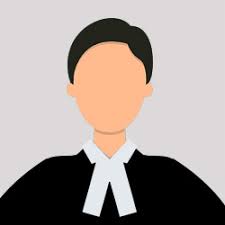CONSULT THE BEST TRADE MARK AND COPYRIGHT LAWYERS IN GOPIKANDAR, DUMKA
We help you to consult and hire the best Supreme Court & High Court Trade Mark And Copyright lawyers in Gopikandar, Dumka. Use filters to narrow your search and find the best advocate in Gopikandar, Dumka, whether its a family dispute or divorce lawyer, property lawyer, employment or labor court lawyer, criminal lawyer, recovery or cheque bounce lawyer, taxation or corporate lawyer, or a lawyer expert in any other field of law.
Get Legal Consultation
-
Advocate Babukumar Kannaiyan
Practice Area : civil law, divorce and alimony, motor accident, in...
City: coimbatore
Practicing Since: 13 Years
VIEW PROFILE -

-

Advocate J N Naresh Kumar
Practice Area : criminal law, civil law, divorce and alimony, trad...
City: chennai
Practicing Since: 16 Years
VIEW PROFILE -

-

Advocate Srinivasa Rao Maddi
Practice Area : divorce and alimony
City: vijaywada
Practicing Since: 08 Years
VIEW PROFILE -

Advocate Prabal Parkash
Practice Area : criminal law, divorce and alimony, motor accident,...
City: karnal
Practicing Since: 03 Years
VIEW PROFILE -

Advocate Nikhil Rathod
Practice Area : criminal law, civil law, divorce and alimony, prop...
City: pune
Practicing Since: 01 Year
VIEW PROFILE -

Advocate Venkatesan Ramakrishnan
Practice Area : civil law, divorce and alimony, insurance laws, pr...
City: chennai
Practicing Since: 13 Years
VIEW PROFILE -

Advocate Swadha Kumari
Practice Area : criminal law, civil law, insurance laws, family di...
City: lucknow
Practicing Since: 08 Years
VIEW PROFILE -

Advocate Akshay Kumar
Practice Area : civil law, divorce and alimony, landlord and tenan...
City: north delhi
Practicing Since: 04 Years
VIEW PROFILE -
Need help to find the best Trade Mark And Copyright lawyers in Gopikandar, Dumka?
Connect with our Legal Experts for assistance
Talk to an expert
Lawyers for Trade Mark And Copyright in Gopikandar, Dumka
What is Copyright? In laymanŌĆÖs language, Copyright means ŌĆ£legal right to control the production and selling of music, book, play, film, or any piece of original workŌĆØ The Copyright Act of 1957 provides copyright protection in gopikandar, dumka. It confers copyright protection in the following two forms:- Economic rights of the author: The copyright consists of original literary, dramatic, musical, and artistic works; cinematography films, and sound recordings. Moral rights of the author: This act defines the two basic ŌĆśmoral rights of an authorŌĆÖ 1. Right of Paternity, 2. Right of Integrity. Copyright Board has been constituted by the Central Government following section 11(1) to discharge judicial functions. This Board consists of a Chairman (who is, or has been a judge of a High Court or is qualified for appointment as a judge of a High Court) and two other members (max.14 members). After consultation with the Chairman, the Central Government may appoint the Registrar of Copyrights who shall be the Secretary of the Copyrights Board and will efficiently discharge his functions. Copyright Laws in gopikandar, dumka SECTION 12 (Powers and Procedure of Copyright Board) According to section 12(1), the Board has the power to regulate its procedure, including the fixing of the places and times of its sittings. ┬ĀThe Board may exercise its power through Benches constituted by the Chairman. This section makes it clear that no member shall take part in any proceedings where he has a personal interest. Any act done or proceeding taken by this Board cannot be questioned on the ground merely of the existence of any vacancy in, or defect in the constitution of the Board. The most important part of this section says, that the Copyright Board shall be deemed to be a Civil Court of sections 345 and 346 of the code of Criminal proceedings, and all the proceedings before the Board shall be deemed to be judicial proceedings within the meaning of sections 193 and 228 of IPC. SECTION 13 (Works in which Copyright subsists) According to this section copyright subsists in the following works: Original literary, dramatic, musical, and artistic works; Cinematograph films; and Sound recordings. Clause (a) of section 13 protects original works whereas clauses (b) and (c) protect derivative works. SECTION 14 (MEANING OF COPYRIGHT However, according to section 14 doing any of the following acts in respect of a work or any substantial part thereof will be termed as Copyright, namely:- a)┬Ā In the case of a literary, dramatic or, musical work not being a computer program,- 1. To produce the work in any material form or store of it in any medium by electronic means 2. To issue copies of the work to the public not being copies already in circulation. 3. To perform the work in public, or communicate it to the public, 4. To make any cinematograph film or sound recording without permission of the original producer. 5. To adapt the work. b) In case of a computer program:- 1) To sell or give or hire, or offer for sale or hire, any copy of the computer program, regardless of whether such copy has been sold or given on hire on earlier occasions. In the case of artistic work, cinematograph film, sound recording above clauses will be applicable as well. Section 14(a) of the Copyright Act, 1957 cannot be interpreted to mean that right of the producer of sound recording to communicate his work to the public under Section 14(e)(iii) of the Act, is lost. SECTION 19 (MODE OF ASSIGNMENT) This section lays down the conditions for the assignment of copyright. It is an essential condition that the assignment of copyright should be in writing and signed by the assignor or his duly authorized agent, otherwise it shall not be valid. It is further required that the assignment of copyright must identify such work and specify the rights assigned, the duration, and the territorial extent of such assignment. SECTION 20 (TRANSMISSION OF COPYRIGHT) According to this section if the author of the copyright dies, who was working on a manuscript of dramatic, literary, artistic, or musical work and was not able to publish the same before dying, then, in that case, the ownership of that copyright is transmitted to the person whose name is stated in the will of the author. What is a Trademark? Trademark is a branch of IPR or Intellectual Property Rights. An intellectual property right allows and ensures people to maintain ownership rights of their innovative product and creative activity. The intellectual property came to light because of the efforts and hard works of human labor, so it is limited by several charges for the registration and charges for infringement. Types of intellectual property are Trademarks, Copyright Act, Patent Act, and┬Ā Designs Act. A trademark includes a name, word, or sign that differentiates goods from the goods of other enterprises. The owner can prevent the use of his mark or sign by another competitor. Trademark is a marketing tool for increasing the financing of the business. A trademark is not always or never a brand but the brand is always a trademark. Sometimes there is confusion between trademark and brand. The brand name can be simply a symbol or logo but the trademark is a distinguishing sign or indicator in a business organization as it has a wider implication than brands. People are more attracted and influenced by the distinctive trademark that reflects the quality of the product. A trademark can be a logo, picture mark, or slogan. Trademark law in gopikandar, dumka: Before 1940 there was no law on trademarks in gopikandar, dumka. Several problems of infringement of registered and unregistered trademark arose which were resolved under Section 54 of the Specific Relief Act, 1877, and registration was adjudicated under the gopikandar, dumkan Registration Act,1908. To overcome these difficulties, the gopikandar, dumkan Trademark law was enforced in 1940. After the enforcement of the trademark law, demand for the protection of trademarks increased as there was major growth in trade and commerce. The Trademark law was replaced with the Trademark and Merchandise Act, 1958. It provides better protection of trademark and prevents misuse or fraudulent use of marks on merchandise. The Act provides registration of the trademark so that the owner of the trademark may get a legal right for its exclusive use. This previous Act got replaced with the Trademark Act, 1999 by the government of gopikandar, dumka by complying with the TRIPS (Trade-related aspects of intellectual property rights) obligation recommended by the World Trade Organization. The main motive behind the trademark act is to ensure full protection to the users of the trademark and direct condition of the property as well as legal remedies and implementation of trademark rights. Procedure and Duration of registration: The registrar on the application by the proprietor of issuing trademark in the prescribed manner within the given period with the adequate payment of fees. Registration of a trademark shall be of ten years and renewal of the registered trademark is also for ten years from the date of expiration of the original registration or the last renewal of registration. The registrar shall send the notice before the expiration of the last registration in the prescribed manner to the registered proprietor. The notice mentions the date of expiration and payment of fees and upon which a renewal of registration may be obtained if at the expiration of the time given on that behalf those conditions have not duly complied with the registrar may remove the trademark from the register. But the registrar shall not remove the trademark from the register if implication made within the prescribed form and the prescribed rate is paid within six months from the expiration of the final registration of the trademark and shall renew the registration of the trademark for ten years. If the trademark is removed from the register for non-payment of the prescribed fee, the registrar shall after six months and within one year from the expiration of the last registration of the trademark renew the registration, And also on the receipt of implication in the prescribed form and on payment of the prescribed fee the registrar restores the trademark to the register and renews the registration of the trademark, for ten years from the expiration of the last registration. Case laws Hearst company Vs Dalal avenue verbal exchange Ltd. The courtroom held that a trademark is infringed when a character in the course of trade makes use of a mark that is the same with or deceptively similar to the trademark in terms of the goods in respect of which the trademark is registered. Use of the mark by using such man or woman needs to be in a manner which is more likely to be taken as getting used as a trademark. South gopikandar, dumkan Music Companies v/s Union of gopikandar, dumka:- In this case, the petitioner challenged the existing legal framework governing the working of the Copyright Board. The Court rejected the argument that the existing legal framework fails to preserve the adjudicatory of the Copyright Board. However, the Court agreed that there should be at least one judicial member in the Board.Registration of Trademark: Any person claiming to be the owner of the trademark or supposed to used the trademark by him in the future for this he may apply in writing to the appropriate registrar in a prescribed manner. The application must contain the name of the goods, mark and services, class of goods and the services in which it falls, name and address of the applicant, and duration of use of the mark. Here the person means an association of firms, partnership firm, a company, trust, state government, or the central government.
Reviews
Great lawyer Mr. Rajiv. Has good communication skills and very professional in his work. Has great experience too. One of the best you may find in the city.
Ravinder posted on 21-10-2019
Great lawyer Mr. Rajiv. Has good communication skills and very professional in his work. Has great experience too. One of the best you may find in the city.
Ritu Sehrawat posted on 21-12-2020
Good knowledge
Ravinder posted on 21-10-2019
Best in Criminal law, he helped us for getting bail in a false case against us.
Ravinder posted on 21-10-2019
Wowww... Very knowledgeable person... Given me a crystal clear advice
Vivek posted on 20-01-2020
A very good lawyer. Has good legal knowledge and gives great advise.
Raju posted on 29-01-2020
Hi Rashmi Maam and Sanjay Sir, i am Tarannum Saba from Mumbai but resident of Patna. I contacted you for marriage registration. I am very much satisfied with your deal and behavior. you are the No. 1 Advocate in Patna for matrimonial issues. I was very much afraid about online advocates but after talking with you and on meeting i came to know about truth of your client's reviews about you on different websites. You deserve to be best and very famous marriage Lawyer in Patna. I recommend all to connect with you for all the legal issues. Thanking you Ma'am . Ma'am one question i have to ask , when i was searching on web i saw a website "vaqilsaheb.com' , is it yours ? Please don't forget me and help me whenever needed.
Tarannum posted on 01-03-2020
hi ma'am . thanks again
Tarannum posted on 01-03-2020
Tarun helped in a professional manner with the situation our family went through and helped every step of the way with his consult to give us the best out come, we appreciate his and firm he represents.
Rakesh posted on 13-03-2020
Tarun helped in a professional manner with the situation our family went through and helped every step of the way with his consult to give us the best out come, we appreciate his and firm he represents.
Rakesh posted on 13-03-2020
The Advocate actually helped me resolve my matter and also stood on his words as committed. Helped me get bail on very first date. I felt very satisfied
Ankit posted on 15-07-2020
I had a property matter which Advocate Dhananjay dealt successfully and helped me get justice.
Raghav Mishra posted on 13-01-2021
Best lawyer
Rahul Shrivastava posted on 04-09-2019
I was heard patiently and advised for the same. Please don't think twice to consult him. Highly recommended. Thank you Anand!!!!
Mansi posted on 31-08-2020
Mr. Bagade was very precise with his advice and his work was of high quality while handling my property issues. Thank you sir.
Jayashri posted on 29-12-2020
Consult a top lawyer for Cheque Bounce & Money Recovery India to solve all your Cheque Bounce issues at an affordable cost.
Shekhar Solanki posted on 11-06-2020
Mr Karthik Raghavan is a very experienced & helpful lawyer. He listens to the problem and understands the situation very carefully and then give his opinion and solution. Fully satisfied with his help.
Paramjeet Dhillon posted on 18-11-2020
Very Professional service, excellent and dedicated and expedient and experienced Team. Hats off.Issue resolved in short span of time
Rahul Rastogi posted on 26-08-2020
Thank you, Advocate Osheen Chawla for helping me in solving my property dispute without any hassle
Rahul posted on 01-04-2021
Adv Munawwar has provided me great guidance in my divorce case and also explained the process & procedure for Divorce
Rahul Shinde posted on 10-02-2021
Adv Devi gave me the right guidance and she is a great matrimonial lawyer and highly recommended.
Ankur Singh posted on 17-03-2021
My experience with Adv Jenal was great. She was very patient in listening and gave me the right advice for my child custody case.
Shubham Kumar posted on 13-04-2021
Adv Nikhil helped me in registering my company. He is a very knowledgeable lawyer & solved all my queries
Shital Jaiswal posted on 16-03-2021
Adv Bhawana Pandey is very cooperative & has a very dynamic approach. Really help me with my mutual content divorce matter.
Masud Rana posted on 20-04-2021
The lawyer helped me taking the right decision going forward. He did my work in a short period of time which I must appreciate.
Gautam Mehlawat posted on 24-03-2021
Great platform. Adv Yogesh was very prompt in responding to my request. He explained to me all the procedure in a kind manner. He seems to be an expert in the field
Archana Gupta posted on 13-04-2021
My case is handled by Adv. Abhishek RajmohanThe process of the Name Change of my son was done smoothly. Thanks, Lawtendo
Raushil Pawa posted on 20-04-2021
Adv Sriram has a lot of knowledge about his field. He explained each and every detail regarding my case and guide me on how to move forward. Will definitely recommend him.
Mohd Ajaz Khan posted on 05-04-2021
The adv Jia was very kind and supportive and I really appreciate it. The advice given by her helped me a lot.
Ajay Singh posted on 23-03-2021
In this covid time, I really thank Lawtendo for providing such a great platform where we can take advice from highly skilled professionals. I had a word with Adv Akshaya regarding my Debt Recovery matter and she helped me with great advice and sorted out my matter without any hustle.
Ankush Kumar posted on 19-04-2021
I am really satisfied with the consultation from Adv Mukund Vasant. I appreciate his transparency. Thanks, Lawtendo for connecting him with me.
Lakshmi Narayan posted on 12-04-2021
Adv Haider was very helpful and also giving me the necessary details for my Divorce case. He gave me a clear picture of my legal position. Services of Lawtendo and Adv Mohd Haider are highly recommendable.
Anuj Sharma posted on 19-04-2021
I am satisfied with the services provided by Adv Ravindra. Extremely polite and professional approach.
Tanya Gupta posted on 23-03-2021
I really appreciate Lawtendo, they referred me to lawyers in Mumbai. I met with Adv Gaurav Shukla who has great knowledge in labour and service law. He helped me a lot in getting my FNF.
Sandeep Kumar posted on 21-03-2021
Many thanks, I am really satisfied with the initial consultation with Adv Ayush Kapur and I am definitely going to recommend Lawtendo.
Rajinder Bhatt posted on 05-06-2021
I really appreciate Lawtendo and the team, I am looking for a well-experienced lawyer for my divorce case. They referred me to a lawyer and that lawyer was really helpful throughout the case, guide me well through all the legal procedures. Great work and truly recommendable.
Anurag Mishra posted on 04-06-2021
Thanks for all your guidance and support throughout the process. Really appreciate it.
Kunal Sharma posted on 12-06-2021
The service provided by adv Himanshu was highly recommendable, he understood my concern and helped me a lot to get a clear idea of the issue. I will surely reach out to him again.
Vaibhav Shah posted on 11-06-2021
I consulted with adv Shailendra, I must say that the money was well spent. I explained him my case and got back to me with suitable advice. Thanks
Prateek posted on 19-06-2021
Great experience with Lawtendo. Thanks for your support. Adv Amrendra is really very helpful and kind.
Santosh Verma posted on 08-06-2021
I contacted Lawtendo for my Family matter. They introduce me to Adv Sanchit and he really helped me in resolving the matter. Thanks, Lawtendo for connecting with such a kind lawyer
VInay posted on 11-06-2021
Lawtendo and Adv Amardeep is really very supportive. Nice service and truly recommendable.
Asha Sharma posted on 09-06-2021
The service was great, taking into consideration this pandemic time, received my marriage certificate. Lawtendo have reasonable price for the entire process. Thanks Lawtendo and team for such a great service.
Vaibhav Diwan posted on 13-06-2021
Got my Property matter solved with the help of the Adv Priyanka and Lawtendo Team, process is smooth and highly recommend. Thanks
Naveen Jha posted on 09-06-2021
Higly qualified, soft spoken, approachable, with good intellect. His command over law is highly remarkable. Initially i had second thoughts about him but he proved me wrong. The best thing about him was that he always kept me updated with my case so i had zero worries and was sure that my case is in the right hands.
SAHIL posted on 23-07-2021
My civil matter was pending for quite alot of time. I was referred to Mr Morris by one of my friend. Thanks to Mr Morris my matter got resolved in no time that too effectively and efficiently.
Sahar posted on 27-07-2021
Awesome lawyer mind blowing really solved my case and gave justice to my 21 year old son who was getting bullied in his office and at some point my son was really depressed but thanks to Mr. Puru Mudgal who gave justice to my son and now my son is enjoying his life
Batak posted on 23-09-2021
Mr. Jubair Ahmad Khan he is the Best and famous Advocate / Lawyer in District Court etah uttar Pradesh India
Ajay posted on 23-10-2021
He is the best and Famous lawyer / Advocate in District Court etah Uttar Pradesh India ????????
Vinod posted on 24-10-2021
Madam Anuradha is an excellent attorney who really goes above and beyond for her client, I'd trust her with anything, she gives her 100% in ever aspect, do not hesitate to call her. She had kept me updated throughout the case and kept me at ease, took personal attention to boost my spirits, i love her care and feel blessed to have her as my trustworthy lawyer to whom I can share anything. Thank you Madam for your hard work, perservance and diligence to achieve justice for the victims.
Shravanthi posted on 24-11-2021
Madam Anuradha is an excellent attorney who really goes above and beyond for her client, I'd trust her with anything, she gives her 100% in ever aspect, do not hesitate to call her. She had kept me updated throughout the case and kept me at ease, took personal attention to boost my spirits, i love her care and feel blessed to have her as my trustworthy lawyer to whom I can share anything. Thank you Madam for your hard work, perservance and diligence to achieve justice for the victims.
Shravanthi posted on 24-11-2021
Horrible lawyer and person. He has no idea what is the meaning of customer service. I am so dissatisfied i have filed a complaint against him in Bar. Avoid him.
Vaibhav posted on 04-05-2022
Horrible lawyer and person. He has no idea what is the meaning of customer service. I am so dissatisfied i have filed a complaint against him in Bar. Avoid him.
Vaibhav posted on 04-05-2022
Siddhartha Shah and Associates will provide solutions to all your legal problems. I would highly recommend them for your divorce and family matters. They are very friendly and brilliant at their work.
Rachna posted on 06-06-2022
Siddhartha Shah and Associates are the leading divorce lawyers in Mumbai. They value their clients and are experts in their field. I will suggest you approach them for all your matrimonial and family matters.
Tulip posted on 07-06-2022
Siddhartha Shah and Associates are the leading divorce lawyers in Mumbai. They value their clients and are experts in their field. I will suggest you approach them for all your matrimonial and family matters.
Tulip posted on 07-06-2022
Siddhartha Shah and Associates were very quick in assisting me in my matters. They were efficient in their strategy and paperwork. I am grateful to them and suggest you approach them for all kinds of family matters. They are the best lawyers in Mumbai and will handle your disputes smoothly.
Jessica posted on 08-06-2022
Siddhartha Shah and Associates have an experience of more than 20 years. Their experience and dedication towards their clients is what makes them perfect. They believe in customer satisfaction and give their best towards each and every case. They take up matters on divorce, family, property, succession as well as international divorce cases. I am glad I approached them.
Prachi posted on 09-06-2022
I was happy with Siddhartha Shah and Associates since the very first meeting with them. They are calm, friendly and extremely helpful people. They have an experience of more than 20 years and will guide you well in all your legal matters especially relating to divorce, succession, property etc.
Rashi posted on 10-06-2022
Siddhartha Shah and Associates understood my issue well and gave me the correct guidance. They are the top leading divorce attorneys in Mumbai with an experience of more than 20 years. They also handle NRIs and International divorces and also advise on the property and estate laws, wills and public trusts, arbitration, and dispute resolutions.
Lata posted on 11-06-2022
Siddhartha Shah and Associates assisted me very well in my case. I would highly recommend them for your family matters. They are always willing to help and I am glad I got them as my lawyers.
Pooja posted on 13-06-2022
Very helpful and responsible advocate. Advocate Sajin is the best advocate Nagercoil .
Nisha posted on 18-06-2022
Very helpful and responsible advocate. Advocate Sajin is the best advocate in Nagercoil .
Nisha posted on 18-06-2022
I am very impressed at their way of working .Very efficient work Adv Sajin .Service is awesome Thank You.
Shiny posted on 18-06-2022
The law firm of Siddhartha Shah and Associates is fantastic. Furthermore, the lawyers here provide the best legal advice and are extremely competent and enthusiastic. They have a wealth of knowledge in all areas. However, they specialise in family law. Among other things, they excel at drafting, case study, and court work. I would strongly advise you to hire them for your legal needs. They offer a very reasonable fee structure.
Trisha posted on 21-06-2022
The law firm of Siddhartha Shah and Associates is fantastic. Furthermore, the lawyers here provide the best legal advice and are extremely competent and enthusiastic. They have a wealth of knowledge in all areas. However, they specialise in family law. Among other things, they excel at drafting, case study, and court work. I would strongly advise you to hire them for your legal needs. They offer a very reasonable fee structure.
Trisha posted on 21-06-2022
One of the best lawyers in Gujarat High Court. Very knowledgeable and reputed lawyer. I found hhis services to be satisfactory.
Suresh posted on 11-07-2022
Excellent lawyer. A great human being. Deeply concerned about clients' cases.
Neerja posted on 10-09-2022
Good Advocate
posted on 05-01-2023
They are really helpful and very knowledgeable. They will make sure that you attain justice and I would definitely recommend them. They are the best in the business.
Leena posted on 26-04-2023
They are really experienced and knowledgeable lawyers. I would personally recommend them. They were very efficent and will guide you no matter what.
Nikita posted on 03-05-2023
Mr. Gupta handled my matter with great tenacity and skill, and brought my case to a successful conclusion. He is ethical, his manner is direct, and he does not provide false hopes or make false promises. His advice is sound and fees is reasonable. Highly recommended!
Ranjai posted on 08-07-2023
These people, both him and his wife are fraudsters. He won't inform you regarding any development of the case, and anytime he will call, and will try to prolong the case and create new hurdles for you to squeeze as much money from you as possible. Don't go by the reviews, they are all fake.
Sehar posted on 13-07-2023
Title: Extremely Disappointed and Unprofessional Service Rating: ????? I recently had the unfortunate experience of hiring a person from a certain company for a service, and I am deeply disappointed with the outcome. I paid the full amount as requested, but the level of professionalism and quality of work I received were far from satisfactory. First and foremost, the basic letter I received was riddled with spelling mistakes and grammatical errors. It was evident that the person responsible for writing it had a poor command of the English language. I was appalled by the lack of attention to detail and the blatant disregard for proper grammar and spelling. It reflects poorly on both the individual and the company as a whole. Furthermore, the overall experience was extremely unprofessional. The communication was haphazard, and I encountered difficulties in getting my concerns addressed. They seemed disorganized and unresponsive, which only added to my frustration. Considering my experience, I cannot, in good conscience, recommend this person or their company to anyone. The subpar quality of work, coupled with the unprofessionalism displayed throughout the process, is simply unacceptable. I believe it is essential to invest your hard-earned money elsewhere, where you can receive the quality and professionalism you deserve. I sincerely hope that this review serves as a warning to others, preventing them from making the same mistake I did. It is crucial to thoroughly research and vet any service provider before engaging their services.
Mohammed aslam posted on 25-07-2023
Worst service...even he doesn't know how to write petition...he just copied someone else petition and send copy me to sign ..he even didn't change the person's name at some places at that copied petition...very unprofessional.taken 10000 rs. from me even without filling my petition and didn't give me back and block my number... please never go to him for any legal advice.don't trust him.
Sheetal posted on 06-08-2023
Ms. Anita Mahaptra is a fraud. She helped my female relative to file a false complaint against me. The Delhi Police ASI harassed me for 3 months and threatened to file IPC 354 (Rape) against me. I am still fighting the complaint. Ms. Anita planned and coached my female relative to plot a scheme to defame and falsely accuse me. She called the ASI multiple times to force and threaten me. Don't listen to her, you may end up with a fraud criminal charge, IPC 182, against you. And you will end up in jail for six months. Stay away from her.
Sameer posted on 08-08-2023
Best lawyer in Kolkata and solve my problem within 2 days
Asok posted on 20-08-2023
Best lawyer in Kolkata and solve my problem within 2 days
Asok posted on 20-08-2023
review
posted on 04-11-2023
review
posted on 04-11-2023
review
posted on 04-11-2023
review
posted on 04-11-2023
review
posted on 04-11-2023
review
posted on 04-11-2023
review
posted on 04-11-2023
review
posted on 04-11-2023
review
posted on 04-11-2023
review
posted on 04-11-2023
review
posted on 04-11-2023
review
posted on 04-11-2023
review
posted on 04-11-2023
review
posted on 04-11-2023
w5P6cLIq
posted on 04-11-2023
-1 OR 2+686-686-1=0+0+0+1 --
posted on 04-11-2023
-1 OR 2+797-797-1=0+0+0+1
posted on 04-11-2023
-1' OR 2+403-403-1=0+0+0+1 --
posted on 04-11-2023
-1' OR 2+525-525-1=0+0+0+1 or '7gRNVrDA'='
posted on 04-11-2023
-1" OR 2+777-777-1=0+0+0+1 --
posted on 04-11-2023
if(now()=sysdate(),sleep(15),0)
posted on 04-11-2023
0'XOR(if(now()=sysdate(),sleep(15),0))XOR'Z
posted on 04-11-2023
0"XOR(if(now()=sysdate(),sleep(15),0))XOR"Z
posted on 04-11-2023
(select(0)from(select(sleep(15)))v)/*'+(select(0)from(select(sleep(15)))v)+'"+(select(0)from(select(sleep(15)))v)+"*/
posted on 04-11-2023
review
posted on 04-11-2023
review
posted on 04-11-2023
review
posted on 04-11-2023
review
posted on 04-11-2023
review
posted on 04-11-2023
review
posted on 04-11-2023
review
posted on 04-11-2023
review
posted on 04-11-2023
review
posted on 04-11-2023
review
posted on 04-11-2023
review
posted on 12-11-2023
review
posted on 12-11-2023
review
posted on 12-11-2023
review
posted on 12-11-2023
review
posted on 12-11-2023
review
posted on 12-11-2023
review
posted on 12-11-2023
review
posted on 12-11-2023
review
posted on 12-11-2023
review
posted on 12-11-2023
review
posted on 12-11-2023
review
posted on 12-11-2023
review
posted on 12-11-2023
CZoeStWw
posted on 12-11-2023
-1 OR 2+730-730-1=0+0+0+1 --
posted on 12-11-2023
-1 OR 2+546-546-1=0+0+0+1
posted on 12-11-2023
-1' OR 2+501-501-1=0+0+0+1 --
posted on 12-11-2023
-1' OR 2+634-634-1=0+0+0+1 or 'LlQNDChs'='
posted on 12-11-2023
-1" OR 2+756-756-1=0+0+0+1 --
posted on 12-11-2023
if(now()=sysdate(),sleep(15),0)
posted on 12-11-2023
0'XOR(if(now()=sysdate(),sleep(15),0))XOR'Z
posted on 12-11-2023
0"XOR(if(now()=sysdate(),sleep(15),0))XOR"Z
posted on 12-11-2023
(select(0)from(select(sleep(15)))v)/*'+(select(0)from(select(sleep(15)))v)+'"+(select(0)from(select(sleep(15)))v)+"*/
posted on 12-11-2023
1 waitfor delay '0:0:15' --
posted on 12-11-2023
review
posted on 12-11-2023
review
posted on 12-11-2023
Getting a certified copy from the sub registers office.This advocate is demanding too much money.,which is not ethical and unreasonable in all circumstances. A Very poor experience with a professional.
PANKAJ posted on 17-06-2024
I had a terrible experience with this lawyer, she had no professionalism at all and even needed to tell me about the spelling mistakes in the document. No transparency in charges. Not recommending to anyone.
Rahul posted on 20-06-2024
Advocate Yogesh Lakshkar advice very appreciable , He has a good knowledge and expertise in the field of law and to deal with all criminal,civil, divorce matters in district court ,family court as well as High court. I recommended everyone his name for best guidance and suggestions in legal issues.
Nikhil posted on 16-07-2024
Best Lawyer in Gwalior for cheque bounce cases.
Prashant posted on 17-07-2024



